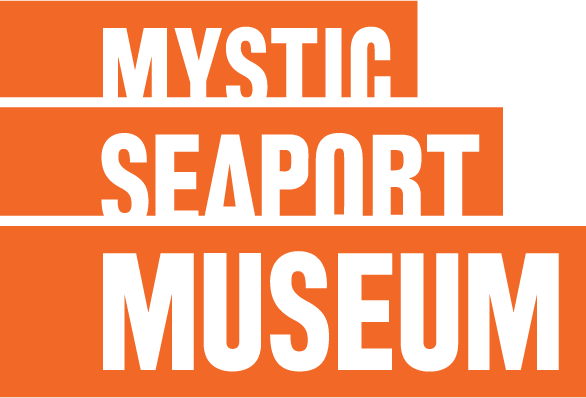
On Friday, April 5, Mystic Seaport Museum hosted a symposium entitled “Franklin Lost and Found: Probing the Arctic’s Most Enduring Mystery,” which drew experts and scholars from across the globe to Mystic, CT, to dissect the doomed Franklin Expedition from 1845 to the present. It was presented in conjunction with the Museum’s current exhibition, Death in the Ice: The Mystery of the Franklin Expedition.
It also attracted about 140 audience members, some from as close as down the road and others from as far away as the United Kingdom, all drawn by the opportunity to hear from those most in the know about one of maritime history’s most enduring mysteries.
On the roster for the daylong symposium were:
- David C. Woodman, author of Unravelling the Mystery of the Franklin Expedition: Inuit Testimony
- Fred Calabretta, director of Collections Management and senior curator, Mystic Seaport Museum
- Kenn Harper, Arctic historian and author of Give Me My Father’s Body: The Life of Minik, the New York Eskimo and In Those Days: Tales of Arctic Whaling
- Lawrence Millman, mycologist and author of A Kayak Full of Ghosts
- Peter Carney, independent Franklin scholar
- John Geiger, president of the Royal Canadian Geographic Society and co-author of Frozen in Time: The Fate of the Franklin Expedition
- Keith Millar, emeritus professor and honorary senior research fellow, University of Glasgow College of Medicine
- Douglas Stenton, Department of Anthropology, University of Waterloo
- Jonathan Moore, senior underwater archaeologist, Parks Canada
- Russell Potter, professor of English and director of Media Studies, Rhode Island College, and author of Finding Franklin: The Untold Story of a 165-year Search
- Leanne Shapton, artist, publisher, and author of Artifacts from a Doomed Expedition, The New York Times

Discussions ranged from the role of the Inuits in determining what happened to the two ships and their crews, to “Franklin in Popular Culture,” to updates on the terrestrial and underwater archeological surveys, to the forensic testing that has been performed on the recovered crew members’ remains.
Staging symposia is not new per se for the Museum, but it is new in terms of connecting such an event to a current exhibition. Since launching the Era of Exhibitions in conjunction with the opening of the Thompson Exhibition Building in 2016, part of the Museum’s long-range plan has included returning to the hosting of scholarly examinations of topics and issues. The 2016 arrival of Nicholas Bell as senior vice president for Curatorial Affairs moved the plan forward as well.
In 2018, the Museum hosted a daylong symposium that coincided with its exhibition Science, Myth and Mystery: The Saga of the Vinland Map. As with Franklin, that event also brought together scholars and experts as well as an interested public to examine the history of this infamous document.
“A top goal of the Era of Exhibitions initiative is being able to stage these types of exhibitions that bring world attention to the Museum,” Bell said. “Hosting world-renowned experts to delve deeply into issues of interest around the exhibitions provides added cachet and speaks directly to the Museum’s mission and vision.”
In addition to enhancing both the exhibitions and the Museum’s reputation, staging symposia provide the opportunity to create a sense of excitement around history and historical investigation and research. As Steve White, president of Mystic Seaport Museum, noted in his welcoming remarks at the Franklin Symposium, “We have assembled a great collection of Franklin researchers, explorers, archaeologists, and writers along with a captivated audience. I get the sense that it is as exciting for our speakers to be in the same room together as it is for those of us who will be observing.”
That sense of excitement was not overstated. Rudy Guliani (not the former mayor), an intern with the New London County Historical Society, was ecstatic when someone at the society was unable to attend and offered him a ticket. A history student at the University of Toronto, the 24-year-old took copious notes throughout the day.
“I am loving this,” he said during the lunch break. “A few months ago I was doing archival work on the Resolute and I got involved in the whole (Franklin) story. Then I went to the (Death in the Ice) exhibition and it was spectacular. And you have the Grinnell Desk! Sometimes if I am just driving by I will stop in and look at it.”
Ellen Berkland is the staff archaeologist for the Massachusetts Department of Conservation and Recreation, based in  Boston. She became a member of the Museum a year ago after visiting The Vikings Begin exhibition. Part of her job is managing archaeological sites in state forests and parks, and so she had a particular interest in hearing from the presenters involved in the modern-day management of the Franklin sites, and the discovery and recovery of artifacts.
Boston. She became a member of the Museum a year ago after visiting The Vikings Begin exhibition. Part of her job is managing archaeological sites in state forests and parks, and so she had a particular interest in hearing from the presenters involved in the modern-day management of the Franklin sites, and the discovery and recovery of artifacts.
“This has been a great mix of information taking us through the history of the voyages, the timelines, all the research, and now seeing that data and the forensics. Hearing about the oral histories and from the anthropologist, I feel there’s a lot I can take away for my own job,” she said.
Museum member Lloyd Hutchins of Groton said he became interested in the Franklin Expedition after the discovery in 2014 of the wreck of Erebus, one of the two ships lost. When Death in the Ice opened, he came, and “became fascinated. I’ve been to the exhibit twice, and when I heard about the symposium, I thought I’d see what else I could learn,” he said. “There are so many interesting facets to the story.”
A book signing by many of the panelists at the symposium ended the day, and gave attendees and members of the public the chance to speak with the authors.
Symposium presenters Russell Potter and Leanne Shapton spoke about the Expedition’s impact on popular culture, dating from today back to 1845. When Shapton wrote about all the missions searching for the wrecks for The New York Times, it was less the history and more the emotion that attracted her. She called the dribs and drabs of artifacts recovered by various 19th century searchers, “a trail of Victorian breadcrumbs strewn across the tundra. … But each fragment flickers with a life.”
At the symposium, she said, “I wanted to bridge the science and the culture and our collective imagination around this story. In the exhibition, there are two left-handed gloves among the artifacts. But they were worn by one man. That idea of him having two left-handed gloves. That opens up your imagination.”
About the Exhibition
Death in the Ice: The Mystery of the Franklin Expedition is a traveling exhibition developed by the Canadian Museum of History (Gatineau, Canada), in partnership with Parks Canada Agency and with the National Maritime Museum (London, UK), and in collaboration with the Government of Nunavut and the Inuit Heritage Trust.
















